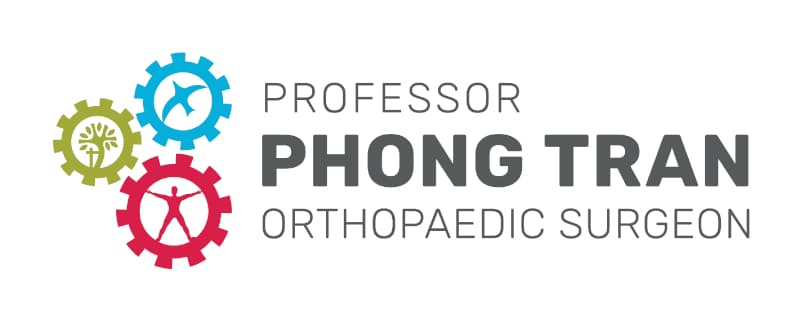
What is a labral tear of the hip?
A labral tear of the hip is a common cause of hip, groin or buttock pain, which can be successfully treated by hip arthroscopy.
Your hip joint is a ball and socket joint made of 2 bones – the femur and the pelvis.
The ball is made of the top of the femur (thigh bone) called the femoral head and the socket is made of part of the pelvis called the acetabulum.
The labrum is a special type of cartilage that helps keep the joint stable and allows the hip joint to function properly.
When the labrum tears, it causes the hip and groin pain and unfortunately does not heal naturally by itself. It causes deep groin pain and sometimes catching.
Symptoms of a Labral Tear of the Hip
If you have a labral tear, you will have discomfort in your groin. Sometimes the pain can radiate to your bottom, lower back, or front of your hip.
Initially, the pain may only felt whilst playing sport.
With time, you may feel pain with any movement that brings your knees towards your chest, such as:
- sitting in low chairs
- getting up from chairs
- driving
- putting on your socks and shoes
- picking things off the ground
- climbing stairs
Sometimes, you may hear an audible pop or feel a tearing sensation at the time of injuring your labrum. Some patients also report a clicking sensation.
Causes of Labral tears of the Hip
One of the most common causes of a labral tear is having a condition called femoroacetabular impingement, also called FAI. In FAI, the bones that make up your hip joint are not perfectly shaped. Your hip joint is a ball and socket joint. In FAI either the femoral head (the ball) has a bump or the acetabulum (the socket) has extra bone on its edge. These extra bone lumps cause abnormal pressure on the labrum, eventually causing them to tear.
A labral tear is common in people who play sports that involve sudden changes of direction such as AFL football, soccer, hockey and netball.
They can also occur in accidents such as falling over or motor car accidents.
As you get older, the labrum can easily be torn with small trivial movements.
Risk factors for sustaining Labral Tears
- Femoroacetabular Impingement.
- Hip Dysplasia
- Labral tears are common in sports such as AFL football, soccer, hockey, tennis and netball.
- Exercises. Repetitive deep squatting and lunges
Investigations for Labral Tears
A well trained doctor can diagnose a labral tear from your symptoms and an examination of your hip.
A number of investigations can help in the diagnosis of a labral tear:
- Xray. Specialised Xrays can help look at the shape of your hips
- CT scan. Helps shows the 3D anatomy of your hip and helps the surgeon plan the operation.
- MRI scan. Is a good test to show a labral tear. Sometimes, an MRI can miss a tear, which only becomes evident during the hip arthroscopy.
Treatment of Labral Tears
A labral tear does not generally repair by itself. Most times, hip arthroscopic surgery is needed to repair it.
During a labral repair, the labrum and the acetabulum (the socket) are prepared so that the labrum can sit back nicely where it belongs. Usually, a special burr is used to shave some bone from the acetabulum.
Special sutures (stitches) are placed around the torn labrum, which is then secured to the acetabulum bone using special devices called suture anchors.



Complications
If a labral tear is left untreated, it will lead to ongoing and worsening pain.
A normal labrum is important to the normal function of the hip joint.
A torn labrum leads to cartilage damage and eventual arthritis of the hip joint.
Seeking Advice
Your GP
Your Family Doctor will be able to diagnose and help treat your problem. He or she will be able to
- tell you about your problem
- advise you of the best treatment methods
- prescribe you medications
- and if necessary, refer you to an Orthopaedic Surgeon for further treatment
Sports Physician
Is a doctor who specialises in sports injuries. A Sports physician is well trained to diagnose the tear and help you though your treatment before and after your surgery.
Physiotherapist
The physiotherapy for labral tears is highly specialised and requires extra training. Standard hip exercises can actually make the pain worse and delay your recovery. A well trained physiotherapist can show you which exercises to perform, and which not to perform.
Orthopaedic Surgeon
An orthopaedic surgeon trained in hip arthroscopy will be able to treat your tear. As hip arthroscopy is a specialised technique, your orthopaedic surgeon may need to refer you to a surgeon who has been trained in the technique.
Prevention
If you have been diagnosed with femoroacetabular impingement, it is important to avoid deep squats, deep sitting and twisting until your hip arthroscopy to treat the impingement.
FAQ
What is the recovery like after a labral repair?
Most people can go home the next morning.
It’s best to take at least 2 weeks off work to recover properly.
- Office work: 2 weeks
- Manual work: 6 weeks
A full regime of return to sport and work will be tailored to your needs by our physiotherapy team. In general:
- 4 weeks: stationary cycling
- 6 weeks: slow tread-mill until running.
Further Reading and References
-
Hip labral repair: options and outcomes. Harris JD. Curr Rev Musculoskelet Med. 2016 Dec;9(4):361-367.
-
Arthroscopic Labral Base Repair in the Hip: 5-Year Minimum Clinical Outcomes. Domb BG, Yuen LC, Ortiz-Declet V, Litrenta J, Perets I, Chen AW. Am J Sports Med. 2017 Jul
-
Return to Sport and Clinical Outcomes After Hip Arthroscopic Labral Repair in Young Amateur Athletes: Minimum 2-Year Follow-Up. Mohan R, Johnson NR, Hevesi M, Gibbs CM, Levy BA, Krych AJ. Arthroscopy. 2017 Sep;33(9):1679-1684.
